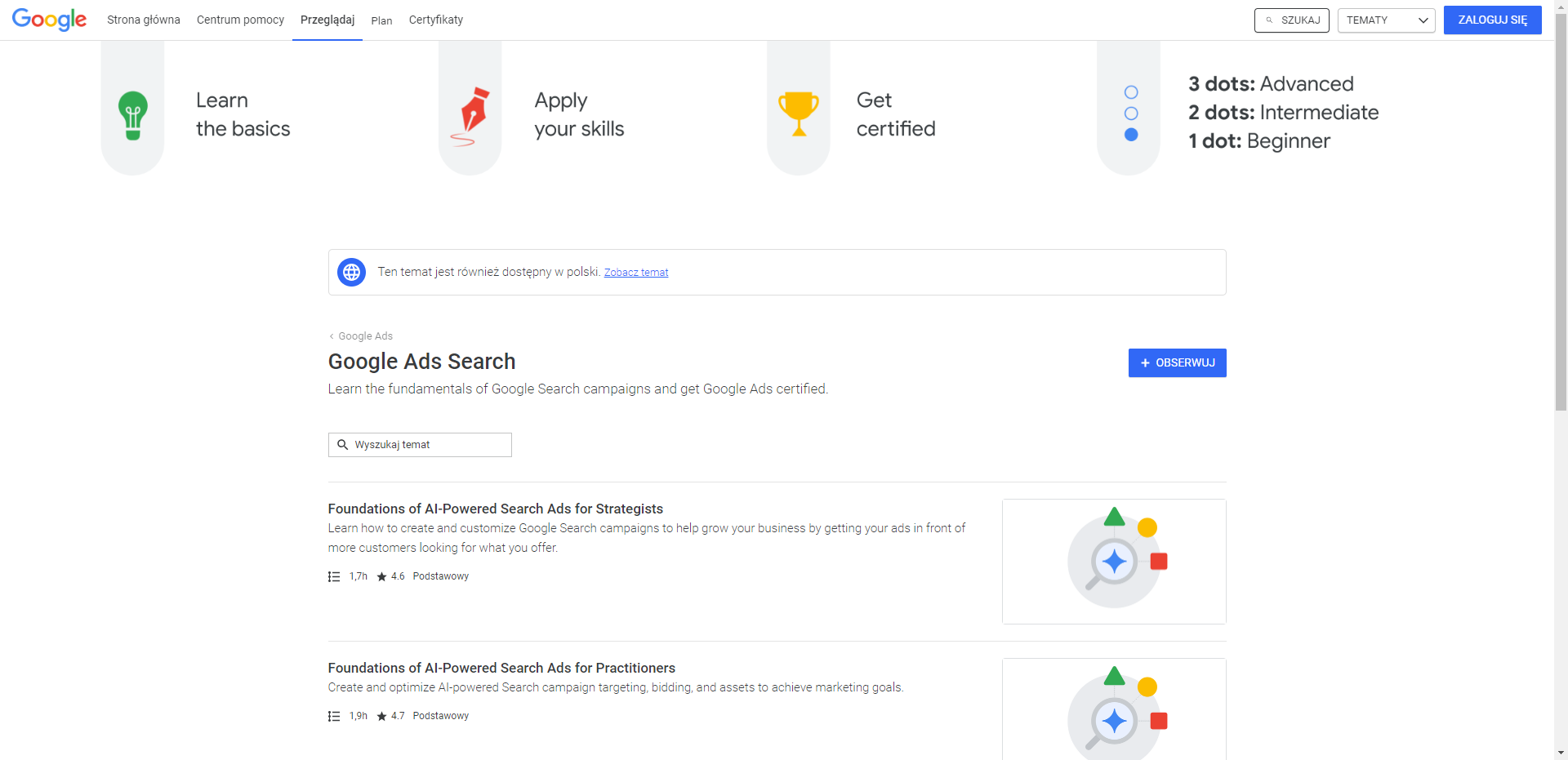October 14, 2023
by AdsLinkers
Share
Every newbie in marketing industry wants to understand data quickly. But how to do that? How to be better at work with still low experience? This guide will show you main metrics and KPIs that are the most important in digital marketing.
Where to look for knowledge?
There are plenty of opportunities to enhance your knowledge of digital marketing. Starting with this guide alone, you can also take courses on platforms such as:
Understanding and committing the metrics and KPIs outlined below to memory will place you ahead of your colleagues with achieving marketing excellence. The great news is that there is a significant demand for marketing specialists nowadays. There are a few crucial skills that are future-proof for the years to come. These include search advertising, programmatic advertising, video and content creation, social media management, and data analytics.
To keep updated with the most recent data you can also check AdExchanger, AdWeek or AdAge.
Let’s elevate your expertise in digital marketing and help you stand out in the ever-evolving digital landscape!
What is the most important?
To embark on a successful career in marketing, it’s vital to grasp the fundamental pillars of advertising, including search, video, and display advertising. Search advertising allows businesses to be visible to potential customers actively searching for products or services. Understanding its mechanics provides a solid foundation for navigating the digital advertising landscape.
Basic Display and Video metrics
Equally important is comprehending video advertising, a dynamic medium swiftly gaining traction. Platforms like YouTube offer extensive opportunities for reaching a broad audience through engaging visual content. Learning how to craft compelling video ads is key to captivating viewers and effectively conveying your brand’s message.
Additionally, display advertising, found across websites and apps, offers a visual way to reach your target audience. Familiarizing yourself with display advertising platforms and strategies is crucial for crafting visually appealing and impactful ads.
| Shortcut | Full name | Description |
|---|---|---|
| CPM | Cost Per Mile | CPM measures the cost of a thousand impressions in an advertising campaign. CPM = Total Cost / Total Impressions * 1000 |
| CPC | Cost Per Click | CPC represents the cost incurred by an advertiser for each click on their ad. CPC = Total Cost / Total Clicks |
| CPA | Cost Per Action | CPA is the cost attributed to a specified action such as a purchase, sign-up, or download. CPA = Total Cost / Total Actions |
| CPL | Cost Per Lead | CPL calculates the cost for generating a potential lead, typically through forms or inquiries. CPL = Total Cost / Total Leads |
| CPS | Cost Per Sale | CPS calculates the cost associated with generating a sale from the advertising efforts. CPS = Total Cost / Number of Sales |
| CPUU | Cost Per Unique User | This metric calculates the cost to reach a single unique user in a campaign. CPUU = Total Cost / Unique User Reach |
| CPE | Cost Per Engagement | CPE measures the cost incurred for user engagement, such as likes, comments, or shares. CPE = Total Cost / Total Engagements |
| CTR | Click Through Rate | CTR indicates the percentage of users who clicked on an ad after viewing it. CTR = (Total Clicks / Total impressions) * 100% |
| CR | Conversion Rate | Conversion rate calculates the percentage of users who completed a desired action (conversion). CR = (Total Conversions / Total Clicks) * 100% |
| BR | Bounce Rate | Bounce rate is the percentage of users who exit a webpage without taking any further action. BR = (Visits without action / Total Visits) * 100% |
Search Advertising Metrics
In today’s digital landscape, search advertising is your beacon in the vast ocean of online marketing. It’s like having a spotlight on your business amidst the noise. Platforms like Google Ads are central to this strategy. Here’s how it works: when someone searches for a product or service, your ad, relevant to their search keywords, appears right at the top.
Performance Metrics
The beauty of search advertising lies in its precision—it connects you with people actively looking for what you offer, drastically increasing the odds of turning that click into a sale. With continual adjusting and optimizing of your ad content and keywords, you can steer your marketing towards higher visibility and better returns. So, set sail and conquer the seas of online marketing with search advertising expertise. To understand Search ads you have to know also metrics like:
| Shortcut | Full name | Description |
|---|---|---|
| Quality Score | Quality Score | It evaluates the relevance and quality of your ads, keywords, and landing pages. A high Quality Score typically translates to lower costs and better ad placements. Formula is based on ad relevance, expected CTR and landing page experience. |
| Ad Rank | Ad Rank | Crucial in determining your ad’s position on search engine result pages (SERPs). It’s influenced by your bid, the quality of your ad, and the expected impact of ad extensions. Ad Rank = Bid Amount * Quality Score |
| ROAS | Return On Advertising Spend | Measures the revenue generated for every dollar spent on advertising. It’s a vital metric in assessing the effectiveness and profitability of your advertising campaigns. ROAS = (Revenue from Ad Campaign / Cost of Ad Campaign) * 100% |
| IS | Search Impression Share | Percentage of impressions your ads receive compared to the total number of impressions they could get. It’s an indicator of your ad’s visibility potential. Impression Share = (Impressions Received / Eligible Impressions) * 100% |
How to measure?
Keeping a close eye on your campaigns is essential. Not just during their current run, but also in evaluating past flights. Most modern marketing platforms equip you to dive into a wealth of metrics in real-time. You can seamlessly navigate to the reporting sections of these platforms.
There is also tool called Google Analytics, powerhouse of information derived from website traffic. It offers insights into the origins of referral traffic and allows a deep dive into the demographic data. Among the crucial metrics, Bounce Rate stands out—a reflection of the proportion of users who exit your site after viewing only one page. Understanding these metrics is key to refining your online strategies and enhancing user engagement.
Apart from GA there are plenty of substitutes like: Piwik Pro, Adobe Analytics, Simple Analytics.

Conclusion
As you navigate through the digital marketing seas, equip yourself with knowledge. You have to adapt to changes, and embrace the power of metrics. With a strong understanding of essential skills and a keen eye on analytics, you can successfully understand digital landscape.
Key takeaways
- Knowledge is Key: Continuous learning and upskilling are vital in the dynamic field of digital marketing.
- Crucial Skills for the Future: In the ever-evolving marketing landscape, certain skills remain essential. Focus on mastering search and programmatic advertising, video and content creation, social media management, and data analytics to stay ahead.
- Explore Diverse Metrics: Dive into a multitude of metrics, each offering unique insights into your campaigns. From cost-based metrics like CPC and CPA to engagement metrics like CTR and CPE.
- Foundations of Advertising: A successful marketing career starts with a strong foundation in advertising pillars like search, video, and display advertising. These are essential components to grasp and excel in the digital marketing realm.
- Utilize Powerful Analytics Tools: Leverage tools like Google Analytics and others to derive valuable insights from website traffic. Understanding user behavior, referral origins, and crucial metrics like Bounce Rate aids in refining strategies for better engagement.
If you are looking for innovations in your marketing plans, you should definetely include AdsLinkers marketing automation technology. Take a look at our possibilities and get in touch with us!







